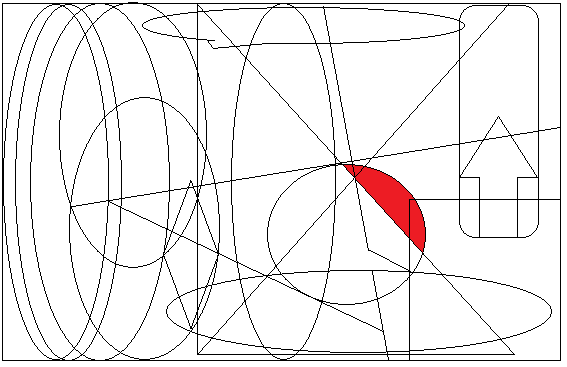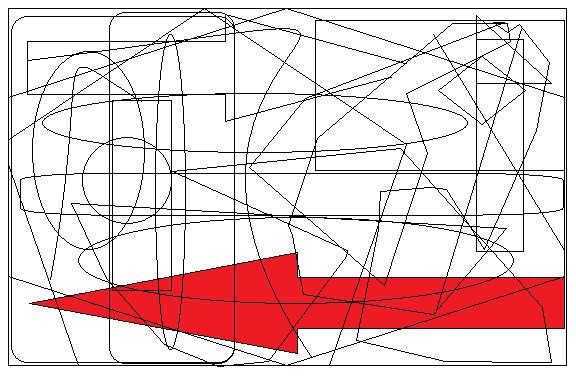The National Criminal Justice Officer Selection Inventory (NCJOSI) civil service exam has two versions: NCJOSI 1 and NCJOSI 2.
Both have a cognitive section, with 4 categories including 45 questions for the NCJOSI 1, and 90 categories including 80 questions for the NCJOSI 2.
There is also a behavioral attributes section common to both.
Keep reading this page for a practice test covering the NCJOSI Exam question types!
Click here for our main page on police exams, with info about police exams across the US, from NY to CA.
NCJOSI 1 Practice Test
This version has 45 multiple choice questions, covering 4 categories:
- Problem Solving Ability
- Reading Comprehension (or Verbal Comprehension)
- Mathematics
- Writing Ability
Problem Solving Ability Sample Questions
These questions will measure your ability to choose the best course of action/solution to a problem.
Sample Question #1
You are directing traffic when a woman runs towards you, crying and holding a phone in her hand. She says that her sister is on the line, telling her that her ex-husband arrived at her house with a knife and threatening to kill her and her children if she doesn't open the door. The sister lives four blocks away from your location.
What is the first thing you should do?
Sample Question #2
A week later, the man who alerted you to the fire at his neighbor's house comes to the station and asks to make a statement.
He says: "That fire was no accident. I know who started it. I saw him running out of the building just before the smoke started. His name is Carl O'Neil. He's been having this long dispute with my neighbor for six months now over this girl. I called the police after it happened and tried to talk to someone, but they told me they would get back to me. Two days ago I came down here and they let me speak to Officer Lee, who's in charge of the case. He said that the case is closed and refused to take my statement! I know my neighbor wouldn’t tell on Carl; he’s too afraid. The officer wouldn't listen to me! I'm afraid that something like this will happen again in my building. You have to do something!"
What would you say?
- The "problem-solving ability" category is very similar to situational judgment tests. We have a preparation pack focused on SJTs available through this link.
Reading Comprehension
These questions will present you with written passages and ask you to answer questions based on the material.
Sample Question #3
Read the following passage, then proceed to answer the question below.
Water Purification Systems are solid-state devices that are found at home or in private businesses, designed to purify drinking water (potable water) and cleaning and bathing water (safe water) in order to reuse them. A water purifier works through the process of reverse osmosis. Water purifiers cleanse water by passing it through a series of filters. This helps remove large amounts of contaminants and other harmful chemicals. The purifier also forces the water through a special plastic covering. The special pores of the plastic covering can block the atoms and molecules of pollutants. Water must go through five distinct stages of sanitation before it is ready to be used at home straight from your water faucet:
In coagulation, coagulants like lime and alum are added to the water, which causes particulates to clump together.
Next, the water is shaken into larger clumps, called flocs.
The sedimentation process requires that the water stand for 24 hours, which allows the clumps to settle to the bottom.
The water is then filtered, disinfected (usually with chlorine) and aerated.
Aeration helps to remove certain contaminants like radon.
Question: Determine the truth value of the following statement based on the text:
Water purification systems are designed to turn potable water into safe water.
Sample Question #4
Read the following passage, then proceed to answer the question below.
THE COLLAPSE OF THE BEE POPULATION
Wild species of bees are said by researchers to be responsible for pollinating around one-third of the world's crop production, performing an important role in preventing world starvation. Unfortunately, lately there has been great concern across the US about the collapse of bee populations.
The Food and Drug Administration (FDA) scientists have identified a number of risks posed to bees by the neonicotinoid chemicals used in pesticides. The FDA has found that these pesticides have acute and chronic effects on bee colony survival and development.
Although the US Department of Health and Human Services (HHS) is adamantly pushing towards restricting the use of neonicotinoid chemicals to crops not attractive to bees and other pollinators, many farmers and crop experts argue that there is insufficient data to make such drastic restrictions. They argue that the report published by the FDA last January specifically stated that in some cases it was "unable to finalize the assessments due to shortcomings in the available data".
A solution to this dispute may be found when examining the general principles of risk management. Apparently, in cases of action being taken under the precautionary principle, the producer/manufacturer may be required to prove the absence of danger rather than waiting until hard evidence of the contrary has come to light.
Question: Determine the truth value of the following statement based on the text:
Neonicotinoid chemicals used in pesticides are the main reason for the collapse of the bee population.
- For info about police exams other than NCJOSI 1 & NCJOSI 2, Click here for our main police exam page with info about police exams across the US.
Mathematics Sample Questions
This section will measure your basic arithmetic (addition, subtraction, multiplication, and division) skills through word and number problems.
Sample Question #5
What is the value of X?
2(x + 3) = 8(x – 6)
Sample Question #6
An oven can bake 8 pies of thin-crust pizza per hour, or 2 pies of deep-dish pizza pies per hour. How many hours will it take to prepare an order of 16 thin-crust pies and 4 pies of deep-dish?
- If you're taking a police exam and can't find practice materials for it/Don't know which test it is, we recommend the All-Inclusive Police Preparation Pack which is suitable for almost every police exam used in the US.
- You can also reach out to us at ask_the_team@jobtestprep.com if you need preparation for an exam but can't find it!
Writing Ability Sample Questions
This category will test your grammar, spelling, punctuation, and vocabulary. It also measures the ability to summarize information efficiently.
Sample Question #7
Bats are the sole pollinators of numerous tropical plants.
Which of the following restatements most accurately reflects the meaning of the original statement above?
Sample Question #8
- The more frequently employees take a break for guided relaxation exercises during working hours each week, the fewer sick days they take.
- Workers who take a guided relaxation break once a week during working hours take fewer sick leaves than those who do not perform relaxation.
- Therefore, if companies started guided relaxation programs, the absentee rate in those companies would decrease significantly.
Select the sentence that best expresses the ideas contained in the sentences above.
The NCJOSI Preparation has accurate practice questions for every section of both NCJOSI 1 and NCJOSI 2.
Get it now and increase your chances of passing and becoming a police officer!
NCJOSI 2 Practice Test
This version has 80 multiple choice questions, covering 10 categories:
- Verbal Comprehension
- Verbal Expression
- Problem Sensitivity
- Deductive Reasoning
- Inductive Reasoning
- Information Ordering
- Spatial Orientation
- Visualization
- Selective Attention
- Flexibility of Closure
Verbal Comprehension Sample Questions
Similar to Reading Comprehension from the NCJOSI I, this section will have you reading paragraphs and answering questions based on them.
Sample Question #9
Embezzlement occurs when a person illegally takes assets that have been entrusted to that person’s care. In order to be charged with embezzlement, a person must have a legal or ethical relationship with the party who owns the asset, and must have intentionally gained possession and acquired ownership through the said relationship with intent to permanently deprive its owner.
According to the definition given, which of the following is the best example of embezzlement?
Sample Question #10
Read the following passage carefully, then proceed to answer the question:
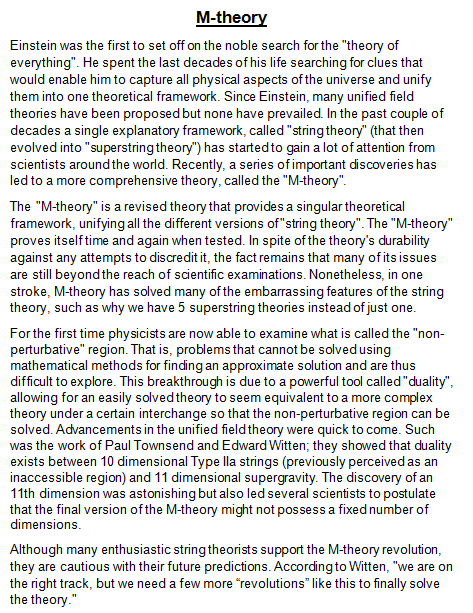
Adapted from: "M-Theory: The Mother of All SuperStrings" by Dr. Michio Kaku. Source
What would be a good alternative title for the passage?
- To answer questions that ask you to find the best titles for a text or paragraph, try phrasing your own title and seeing which of the multiple-choice answers is most similar.
Verbal Expression Sample Questions
Similar to Verbal Expression from the NCJOSI I, this section deals with mastery of every aspect of the English language.
Sample Question #11
Choose the word that best completes the sentence:
Organizational resources must be ____ in order to collect, store, and analyze measures.
Sample Question #12
Choose the word that best completes the sentence:
They hoped to test how well ____ the big cats' wild ____ were by seeing if they could hunt.
Problem Sensitivity Sample Questions
Similar to Problem Solving Ability from the NCJOSI I, this section deals with solving given scenarios effectively.
Sample Question #13
Officer Harry interviewed four witnesses to a shooting that occurred in a movie theater parking lot. They each described the suspect as follows:
Witness 1: “He was a Black male, in his late twenties. He was shouting obscenities in what sounded like a South African accent. He was over six feet tall, around 200 pounds, and had short curly hair. He was wearing a red jacket, navy blue or black pants, and had a piercing in his left ear.”
Witness 2: “He was a Black male around 6’3” and 210 pounds. He looked about thirty and was screaming in an accent. He was wearing a maroon jacket and dark blue pants.”
Witness 3: “He was a Black man around 6’2” roughly 200 pounds, and looked about 27 years old. He had short, curly dark hair and wore a jacket, and dark pants. He had a crazed look in his eyes, and just stood there silently shooting indiscriminately.”
Witness 4: “He was a tall; dark-skinned male about 6’4” and over 200 pounds. He was in his late twenties and had dark, short hair. He was wearing a red top, and dark blue pants. He kept on screaming that he was sorry in an Australian accent.”
Given this information, there is a problem with the description given by what witness?
Sample Question #14
Officer Harry interviewed four witnesses to a shooting that occurred in a movie theater parking lot. They each described the suspect as follows:
Witness 1: “He was a Black male, in his late twenties. He was shouting obscenities in what sounded like a South African accent. He was over six feet tall, around 200 pounds, and had short curly hair. He was wearing a red jacket, navy blue or black pants, and had a piercing in his left ear.”
Witness 2: “He was a Black male around 6’3” and 210 pounds. He looked about thirty and was screaming in an accent. He was wearing a maroon jacket and dark blue pants.”
Witness 3: “He was a Black man around 6’2” roughly 200 pounds, and looked about 27 years old. He had short, curly dark hair and wore a jacket, and dark pants. He had a crazed look in his eyes, and just stood there silently shooting indiscriminately.”
Witness 4: “He was a tall; dark-skinned male about 6’4” and over 200 pounds. He was in his late twenties and had dark, short hair. He was wearing a red top, and dark blue pants. He kept on screaming that he was sorry in an Australian accent.”
Given this information, there is a problem with the description given by what witness?
Deductive Reasoning Sample Questions
Deductive reasoning is all about applying rules and regulations correctly. You will be given passages explaining departmental policies and must judge several situations according to those policies.
Sample Question #15
RULE:
(SECTION 1) Gradual migration to digital file storage
The MI-01 regulations were declared on March 27th, 2005, and are followed to this day. These regulations are stated below and act as the procedure for gradual migration.
Times: Starting July 2005, Fridays will be closed for reception and dedicated solely to the migration process. A Friday shall be called a Migration Day unless it is the first Friday of any month; in that case, it shall be called a Sweep Day.
Labeling: Append a white labeled MI-12 form to any paper files you access or check that do not already have one. After every access to a file, mark the date in the MI-12, and sign your name next to the date. If the MI-12 is labeled black, swap it for a white label. Every Sweep Day, all files with an MI-12 not labeled black or red are to be checked for last-day of access.
- If in all three previous months the file was accessed at least once, the MI-12 label must be swapped to blue; unless it was accessed at least five times in every one of these months, in which case it must be swapped to red.
- Starting October 2005, if the file was not accessed even once in the previous six months, the MI-12 must be marked by a black label.
Migration: Every Migration Day, files are to be typed into the computer system.
- Start with files with red labeled MI-12 forms
- If there are none, migrate files with a blue labeled MI-12.
After migrating a file, swap its MI-12 form’s label to green.
SITUATION:
Presented below is the MI-12 form of a file as it appeared on Tuesday, October 25th, 2005.
| Date of Access | Signature | |||
|---|---|---|---|---|
| Year | Month | Day | Weekday | |
| 2005 | 04 | 27 | Wednesday | Mrs. Haley Fitzgerald |
| 2005 | 05 | 10 | Tuesday | Mr. Harvey Dennis |
| 2005 | 05 | 18 | Wednesday | Ms. Eve Cole |
| 2005 | 05 | 19 | Thursday | Ms. Eve Cole |
| 2005 | 05 | 24 | Tuesday | Mr. Harvey Dennis |
| 2005 | 05 | 25 | Wednesday | Mr. Harvey Dennis |
| 2005 | 06 | 6 | Monday | Ms. Eve Cole |
| 2005 | 06 | 7 | Tuesday | Ms. Eve Cole |
| 2005 | 06 | 7 | Tuesday | Mrs. Haley Fitzgerald |
| 2005 | 06 | 14 | Tuesday | Mr. Harvey Dennis |
| 2005 | 06 | 16 | Thursday | Mr. Harvey Dennis |
| 2005 | 06 | 23 | Thursday | Ms. Eve Cole |
| 2005 | 07 | 7 | Thursday | Mrs. Haley Fitzgerald |
| 2005 | 07 | 11 | Monday | Ms. Eve Cole |
| 2005 | 07 | 12 | Tuesday | Mr. Harvey Dennis |
| 2005 | 07 | 19 | Tuesday | Ms. Eve Cole |
| 2005 | 07 | 19 | Tuesday | Ms. Eve Cole |
| 2005 | 07 | 19 | Tuesday | Ms. Eve Cole |
| 2005 | 07 | 26 | Tuesday | Mrs. Haley Fitzgerald |
| 2005 | 07 | 28 | Thursday | Mr. Harvey Dennis |
a) What color was the label of the file’s MI-12 on Wednesday, May 11th, 2005?
b) What color was the label of the file’s MI-12 on Tuesday, July 12th, 2005?
Sample Question #16
RULE:
FIREFIGHTER NIGHT SHIFT
Firefighters are divided into three different platoons of eight. The regular shift schedule is a rotation between the three platoons. Each platoon's shift starts at 9:00 AM and ends 24 hours later. Each platoon takes 48 hours off between shifts.
In addition, during each shift, two members of the on-duty platoon have that shift off. These members are selected through a rotation between all of the platoon's members.
If a member specifically needs time off when he is scheduled for a shift, he may change shifts with a fellow platoon member. If more than two members of a platoon need time off on the same shift, changes with other platoon members are also permitted. Exchanges must be for equal time and for whole shifts.
Firefighters must have at least 24 hours off between shifts.
a) Which of the following is impossible?
b) Which of the following is possible?
Inductive Reasoning Sample Questions
This category presents information and requires the test taker to find the common element, concept, or rule that connects the information. Passages, tables, and charts commonly appear here.
Sample Question #17
The following chart displays the number of crimes committed in a city between the years 2010 and 2014:

Which of the following statements is most supported by the information given above?
Sample Question #18
The following table describes the minimum amount of emergency personnel that need to respond in different situations:
| Police | Firefighters | Paramedics | |
| Class I Fire | 2 | 5 | 2 |
| Class II Fire | 4 | 10 | 6 |
| Class III Fire | 4 | 20 | 10 |
| Crime With No Injuries | 3 | 0 | 0 |
| Crime With Minor Injuries | 3 | 0 | 1 |
| Crime With Major Injuries | 5 | 2 | 2 |
| Class I Car Crash | 3 | 2 | 1 |
| Class II Car Crash | 3 | 2 | 2 |
| Class III Car Crash | 3 | 2 | 3 |
The minimum number of emergency personnel that must respond to any of the situations mentioned above is:
Information Ordering Sample Questions
For this category, you will need to figure out the logical sequence of items in various situations.
Sample Question #19
The following steps should be followed when approaching a crime scene. (These steps are not listed in the correct order.)
- Evaluate what kind of physical evidence may be present
- Capture the scene photographically
- Initiate a preliminary survey of the scene
- Prepare a narrative of the scene
- Conduct a detailed search of the scene
- Secure and protect the scene
- Record and collect evidence
The most logical order for the steps above is:
Sample Question #20
When taking in a new inmate to a prison, the following procedures should be followed in the given order:
- The county must contact its designated Reception Center Institution, on or before the Thursday prior to the week of transfer, to coordinate the upcoming delivery of the inmates.
- In the event the Reception Center is unable to accept delivery of the inmate, the county shall contact Intake Control Unit who will make every effort to direct the county to an alternate Reception Center.
- Inmates shall be delivered in the order in which they were notified to the Reception Center.
- Inmates must arrive with all of their required documentation, including, but not limited to, a copy of the minute order certified by the clerk of the court or judge and confidential medical documents indicating that the inmate is medically capable of transport.
- Immediately upon arrival, the inmate’s identity shall be verified by staff.
- Upon staff’s reception of an inmate’s cash and personal property, a CGR 155 shall be completed.
- Each inmate shall be photographed and assigned an identification card.
Donald Walker arrived at the Wade Reception Center and handed Officer Kathy all of his documentation, cash, and possessions. What should Officer Kathy do next?
Spatial Orientation Sample Questions
This category tests your navigational skills by asking you to choose your route and track cardinal directions while doing so.
Sample Question #21
An arrow on a street indicates that, unless otherwise specified, along the entire street, traffic is only allowed to travel in the direction in which the arrow is pointing.
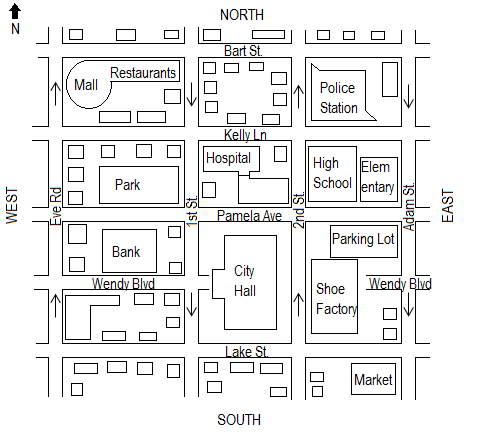
Sample Question #22
An arrow on a street indicates that along the entire street, traffic is only allowed to travel in the direction in which the arrow is pointing.
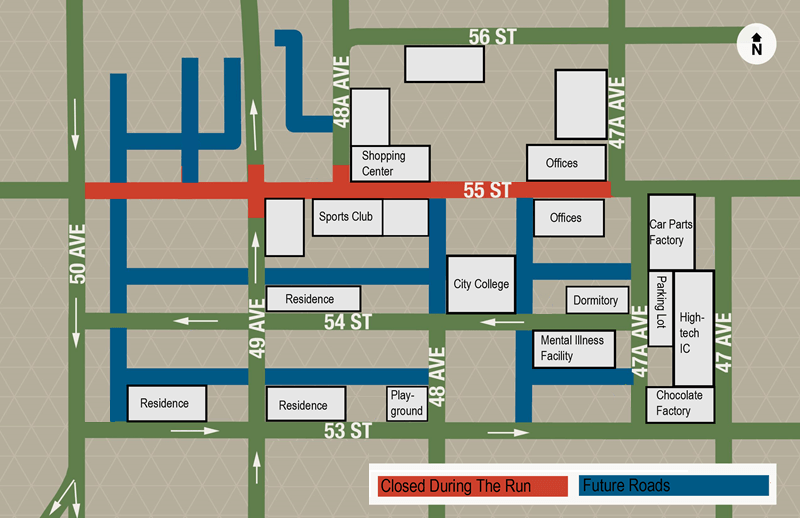
The dormitory is _____ of the Sports Club and _____ of the Chocolate Factory.
Visualization Sample Questions
Visualization questions assess your ability to identify changes done to shapes, faces, or other images.
Sample Question #23
On the left, a portrait of a suspect is presented. On the right are four different portraits. Out of the four, only one is the suspect. Assuming no plastic surgery or drastic changes to basic facial features have been performed and only superficial features (such as hair and/or glasses) have changed, choose the portrait that is most likely to be the suspect.

Sample Question #24
On the left, a portrait of a suspect is presented. On the right are four different portraits. Out of the four, only one is the suspect. Assuming no plastic surgery or drastic changes to basic facial features have been performed and only superficial features (such as hair and/or glasses) have changed, choose the portrait that is most likely to be the suspect.

Selective Attention Sample Questions
This category measures your concentration by having you compare complicated lines of letters, numbers and symbols to find discrepancies or find identical copies.
Sample Question #25
Determine which of the options is an exact copy of: )#($*%#*)$EDR@#}|}|F}$R(
A. )#($°%#*)$EDR@#}|}|F}$R(
B. )#($*%#*)$EDR@#}||}F}$R(
C. )#($*%#*)$EDR@#}|}|F}$R(
D. )#($*%#*)$EDR@#}|}|F}sR(
Sample Question #26
Determine which of the options is an exact copy of: ≥Żjgi0ǼEΓtΔ5@klfk]\
A. ≥Żjgi0ǼEΓtΔ5@klfk[\
B. ≥Żjgi0ÄEEΓtΔ5@klfk]\
C. ≥Żjgi0ǼELtΔ5@klfk]\
D. ≥Żjgi0ǼEΓtΔ5@klfk]\
Flexibility of Closure Sample Questions
This category assesses your attention to detail and your focus by asking you to differentiate between different shapes and locate specific objects.
Sample Question #27
Select the object that is included in the figure below. Only ONE of the objects is included in the figure. The object may be larger, smaller or rotated in the picture as compared to the one provided by the correct answer option choice, but the proportions will be identical.
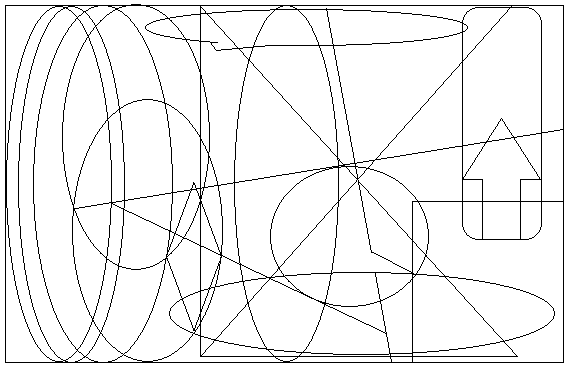
Sample Question #28
Select the object that is included in the figure below. Only ONE of the objects is included in the figure. The object may be larger, smaller or rotated in the picture as compared to the one provided by the correct answer option choice, but the proportions will be identical.
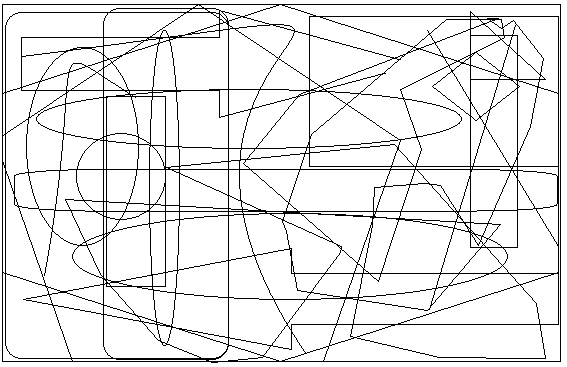
Those were 28 questions from both versions of the NCJOSI Exam. Did you get all of them right?
The NCJOSI Preparation pack has hundreds more, with detailed solutions for every single one. It also includes full NCJOSI Practice tests which simulate the real thing!
Start practicing now and master the exam before taking it!


